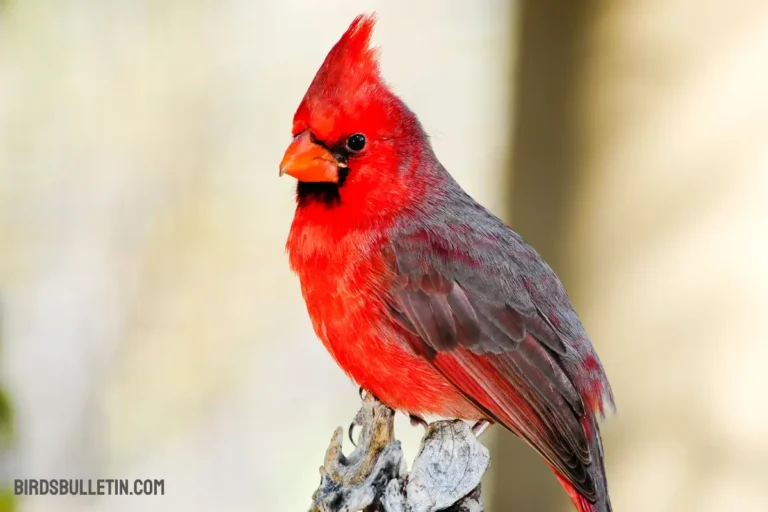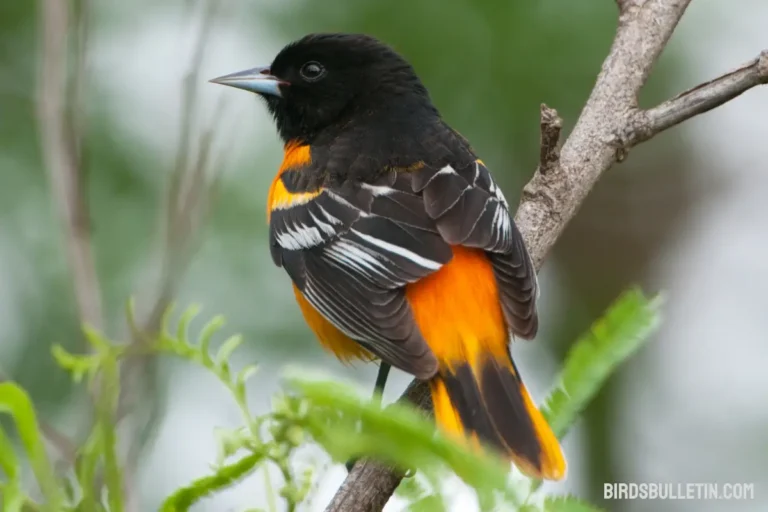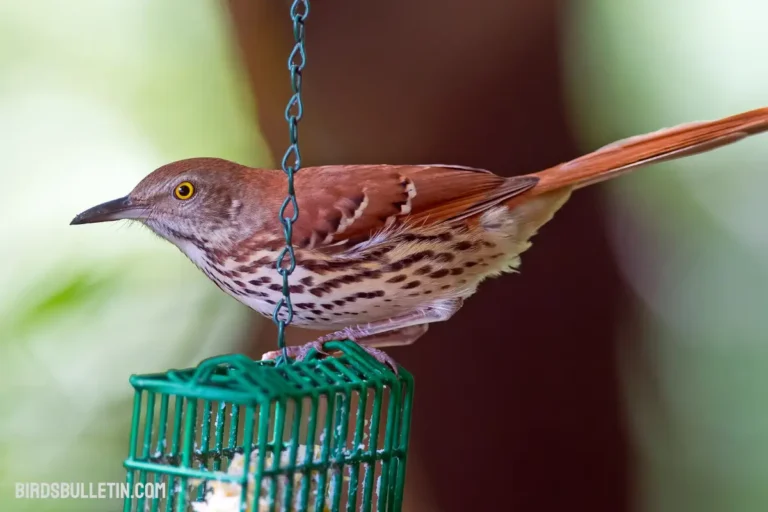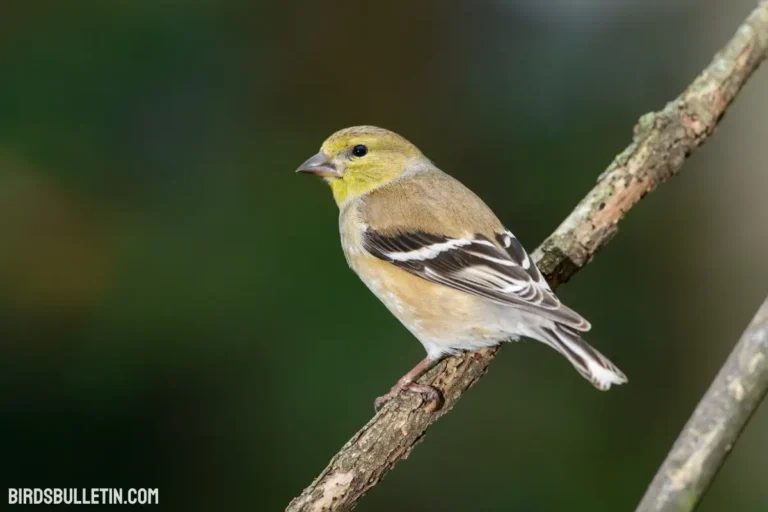Wood Thrush Overview (Beloved Songster)
With its beautiful, flute-like song echoing through eastern forests, the wood thrush (Hylocichla mustelina) holds a special place in the hearts of birders and nature lovers.
This shy songbird has inspired poets and musicians with its melodic voice, earning it nicknames like the “forest nightingale.”
In this article, we’ll explore some key facts about this beloved and intriguing member of the thrush family. From its appearance and range to its habitat and behavior.
Interested in similar topics on birds overview:
How Can the Wood Thrush Be Identified?
The wood thrush is a medium-sized songbird belonging to the thrush family. With its reddish-brown upperparts, white underparts with dark brown spots, and white eye rings, the wood thrush has a very peculiar appearance.
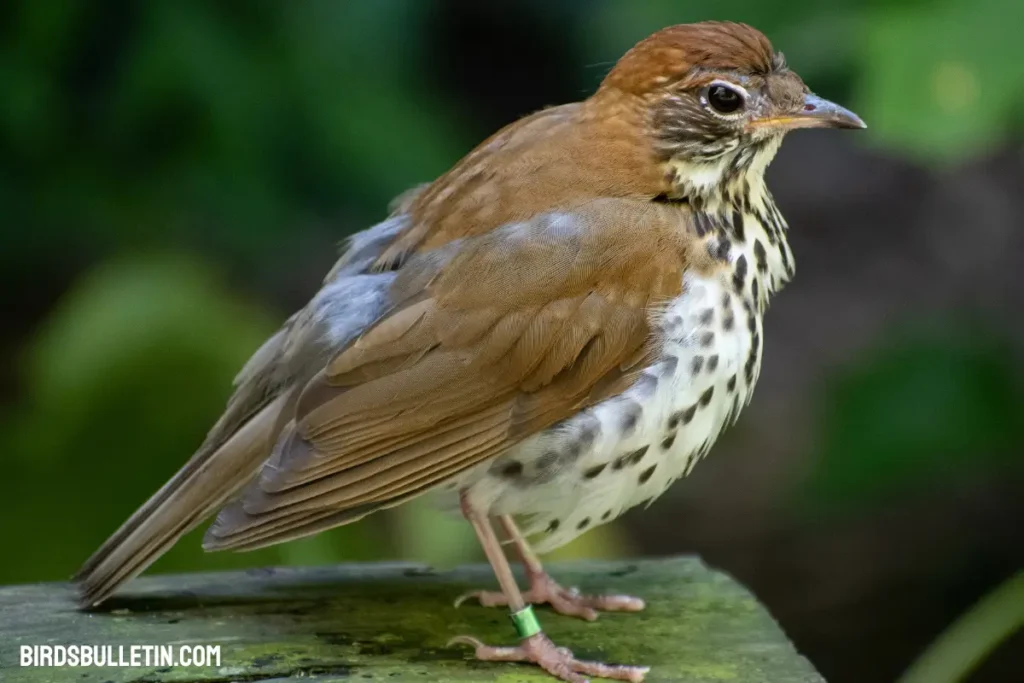
Its most identifiable feature is perhaps its beautiful, flute-like song, which has been described as one of the most melodious bird songs in North America.
Wood Thrush Profile
Here is a table with key facts about the wood thrush:
| Category | Details |
|---|---|
| Scientific Name: | Hylocichla mustelina |
| Alternative Common Name: | Swamp angel, Forest nightingale, song thrush, or wood robin. |
| Color: | Brown back with reddish-orange head, white underparts with black spots |
| Lifespan: | 8-9 years |
| Wingspan: | 10.5-11.8 inches |
| Weight: | 0.63-1.31 oz |
| Size: | 6-7 inches |
| Diet: | Insects, spiders, snails, fruit |
| Breeding Season: | April to August |
| Locations: | Deciduous forests in eastern North America |
| Threats: | Habitat loss, predation, collisions, cowbird parasitism |
What Subspecies of The Wood Thrush Exist?
This species is the only member of the genus Hylocichla. It belongs to the thrush family, Turdidae, which includes similar birds like the American robin.
What Is the Population Status of The Wood Thrush?
The wood thrush has experienced significant population declines in recent decades. The breeding population in the US is estimated at 12 million, down from around 13 million in the 1960s.
These declines are attributed to the loss of forest habitat and increased nest predation. Despite declines, the wood thrush remains a common species over much of its eastern US breeding range.
What Are the Migration Patterns of The Wood Thrush?
The wood thrush is a long-distance Neotropical migrant, breeding in eastern North America and wintering in Central America and northern South America. They migrate through the eastern US to and from their breeding grounds each spring and fall.
Migration peaks in May and September. These songbirds can migrate thousands of miles between their breeding and wintering grounds.
What Are the Behaviors and Habits of The Wood Thrush?
Wood thrushes are shy, solitary birds that inhabit mature, deciduous forests. Owing to their reclusive nature, they are more often heard than seen. Males sing beautiful, flute-like songs to attract females and defend territories. Both parents build an open-cup nest and care for the young.
While not social birds, wood thrushes play an important ecological role in dispersing seeds and spreading mycorrhizal fungi spores that are beneficial to forest health.
Interspecies Interactions
Wood thrushes have complex interrelationships with other forest species. As habitat generalists, they benefit from forest gaps created by natural tree falls that promote dense understory growth. They consume soil invertebrates, playing a role in nutrient cycling.
Wood thrushes serve as prey for snakes, mammals, and birds of prey while being hosts to brood parasitic brown-headed cowbirds. Their fungi-rich droppings may provide food for black bears. Overall, wood thrushes are an indicator of forest ecosystem health.
What Conservation Efforts Support the Wood Thrush?
Habitat loss is the greatest threat facing the wood thrush. Fragmentation of their forest breeding habitat due to human development has reduced the quantity and quality of the remaining forest. Climate change may also impact the timing of migration and breeding.
Conservation efforts focus on protecting large forest tracts and promoting sustainable forestry practices. The wood thrush is identified as a Species of Conservation Concern by state and federal agencies.
Interesting Facts
Here are 5 cool facts about the wood thrush
- The wood thrush has two white wing bars that are visible during flight, helping distinguish it from other similar brown thrushes.
- Its beautiful, flute-like song contains phrases that are often repeated three times, giving it a unique musical quality.
- Wood thrushes have a very large voice box (called a syrinx) in relation to their body size which allows them to produce their complex songs.
- They use a technique called “foot trembling” during courtship displays where they vibrate their feet against leaf litter rapidly to make a sound.
- The male wood thrush will build up to three nests in his breeding territory, then let the female select the one she prefers to lay her eggs in.
Frequently Asked Questions
1. What does the Wood Thrush eat?
Wood thrushes are omnivores, eating a variety of invertebrates like insects, snails, and worms along with wild fruits and berries. They forage by probing leaf litter on forest floors using their bills.
2. Where can I find the Wood Thrush?
The wood thrush breeds in mature deciduous and mixed forests across eastern North America. Its breeding range spans from Manitoba to Nova Scotia in the north down to eastern Texas and Florida.
3. Why is the Wood Thrush population declining?
Habitat loss is the biggest threat to the wood thrush, as clearing of forests for development fragments their breeding grounds. Predation, collisions during migration, and climate change also contribute to ongoing population declines.
4. Where do Wood Thrushes nest?
They nest on horizontal branches, tree forks, or saplings 5-15 feet above ground. Nests are made from mud reinforced with grasses and leaves. Females lay 3-5 pale blue eggs.
Final Thought
This bird is Famous for its beautiful, flute-like song, the wood thrush sings to declare breeding territories and attract mates. Its voice has inspired poets and nature writers for generations. Unfortunately, habitat loss has led to declining populations.
Still, this shy forest bird continues to fill the woods with its musical trills and warbles each spring. Learning more about the wood thrush helps us appreciate the songster that has touched so many with its voice.
References:
- Roth, R.R., M.S. Johnson, and T.J. Underwood. 1996. Wood Thrush (Hylocichla mustelina), version 2.0. In The Birds of North America (P. G. Rodewald, editor). Cornell Lab of Ornithology, Ithaca, New York, USA.
- US Fish and Wildlife Service. 2008. Birds of Conservation Concern 2008. United States Department of Interior, Fish and Wildlife Service, Division of Migratory Bird Management, Arlington, Virginia. 87 pp.
- National Audubon Society. (n.d.). Wood Thrush. https://www.audubon.org/field-guide/bird/wood-thrush


